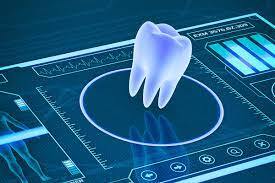Introduction to Dentistry Technology
Dentistry technology encompasses a wide array of tools, equipment, and techniques designed to enhance dental care delivery and patient outcomes. From digital imaging systems to computer-aided design and manufacturing (CAD/CAM) technology, the dental industry is continually evolving to incorporate innovative solutions that streamline processes and improve treatment efficacy.
Digital Dentistry: Revolutionizing the Field
Intraoral Cameras
One of the notable advancements in digital dentistry is the integration of intraoral cameras. These miniature cameras allow dentists to capture high-resolution images of the oral cavity, providing a detailed view of teeth, gums, and soft tissues. Intraoral cameras facilitate better communication between dentists and patients by visually illustrating dental issues and treatment recommendations.
CAD/CAM Technology
CAD/CAM technology has transformed the way dental restorations are designed and fabricated. With computer-aided design and manufacturing systems, dentists can create precise crowns, bridges, and veneers in a fraction of the time compared to traditional methods. CAD/CAM technology ensures optimal fit and aesthetics, leading to superior patient satisfaction.
Advancements in Diagnostic Tools
3D Imaging and CBCT Scans
Three dimensional imaging and cone-beam computed tomography (CBCT) scans have revolutionized diagnostic capabilities in dentistry. These advanced imaging techniques provide detailed, cross-sectional views of the oral and maxillofacial structures, enabling dentists to assess bone density, detect abnormalities, and plan complex procedures with unparalleled accuracy.
Digital Impressions
Digital impressions have replaced traditional, messy impression materials with digital scanning technology. Dentists can capture highly accurate impressions of the teeth and soft tissues using intraoral scanners, eliminating discomfort for patients and improving workflow efficiency in the dental office.
Enhanced Treatment Procedures
Laser Dentistry
Laser technology has gained popularity in various dental procedures, including periodontal therapy, cavity preparation, and soft tissue surgeries. Lasers offer precise tissue ablation, minimal discomfort, and faster healing times, making them a preferred choice for both patients and clinicians.
Robotics in Dentistry
Robotic-assisted procedures are emerging as a promising avenue in dentistry, particularly in implant placement and orthodontic treatments. Robotics enable precise positioning of dental implants and enhance the predictability of treatment outcomes, leading to improved long-term success rates.
Improving Patient Experience
Virtual Reality (VR) in Dentistry
Virtual reality technology is transforming the dental patient experience by providing immersive distractions during treatment procedures. Patients can escape into virtual environments, reducing anxiety and discomfort associated with dental visits.
Tele-dentistry Services
Tele-dentistry platforms enable remote consultations, diagnosis, and treatment planning, expanding access to dental care for underserved populations and individuals in remote locations. Through tele-dentistry, patients can receive expert dental advice without the need for in-person appointments.
Nanotechnology and Dentistry
Nanotechnology holds promise for developing novel dental materials with enhanced properties, such as improved strength, antibacterial properties, and enhanced tissue integration. Nanomaterials have the potential to revolutionize restorative and preventive dentistry, paving the way for more durable and biocompatible dental solutions.
The Role of Artificial Intelligence (AI)
Artificial intelligence is increasingly being integrated into dental software and diagnostic tools to improve decision-making and streamline workflows. AI algorithms can analyze vast amounts of patient data, identify patterns, and assist dentists in treatment planning, ultimately enhancing diagnostic accuracy and treatment outcomes.
Sustainability in Dentistry Technology
Dentistry technology is also embracing sustainability initiatives aimed at reducing environmental impact and promoting eco-friendly practices. From digital patient records to energy-efficient dental equipment, dental practices are adopting sustainable solutions to minimize waste and conserve resources.
Challenges and Limitations
Despite the numerous benefits of dental technology, challenges such as cost barriers, training requirements, and data security concerns remain significant considerations for dental professionals. Addressing these challenges requires ongoing education, investment in infrastructure, and collaboration within the dental community.
Future Trends and Predictions
Looking ahead, the future of dentistry technology promises continued innovation and advancements in areas such as regenerative dentistry, personalized treatment approaches, and precision medicine. As technology continues to evolve, dentists must stay abreast of emerging trends and embrace opportunities to enhance patient care delivery.
FAQs
How are intraoral cameras beneficial for dental examinations?
- Intraoral cameras provide dentists with a detailed view of the oral cavity, allowing for accurate diagnosis and enhanced patient communication.
What role does virtual reality play in dentistry?
- Virtual reality technology helps alleviate patient anxiety during dental procedures by providing immersive distractions.
Are robotic-assisted procedures widely available in dentistry?
- While still emerging, robotic-assisted procedures are gaining traction in dental implant placement and orthodontic treatments.
How does nanotechnology impact restorative dentistry?
- Nanotechnology enables the development of dental materials with enhanced properties, such as improved strength and antibacterial capabilities.
What are the key challenges associated with implementing dental technology?
- Cost barriers, training requirements, and data security concerns are among the primary challenges facing the implementation of dental technology.
Conclusion
In conclusion, the latest advancements in dentistry technology are reshaping the way oral healthcare is delivered, with a focus on precision, efficiency, and patient-centered care. From digital imaging systems to artificial intelligence, these innovations hold the potential to revolutionize the field of dentistry and improve outcomes for patients worldwide.


